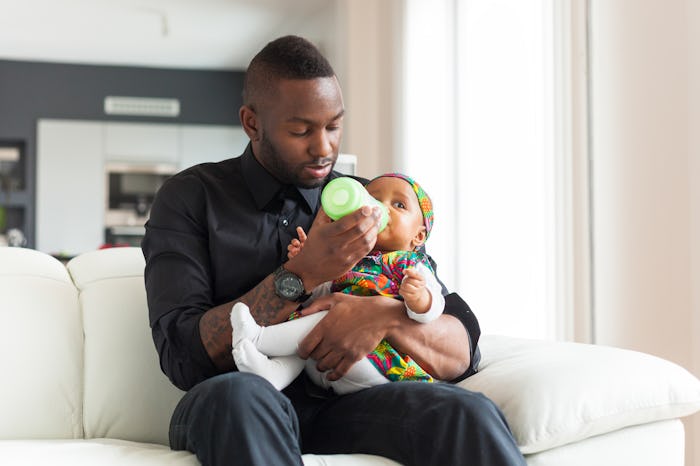Life

Here's How To Choose A Bottle For Your Baby
At this point in bottle manufacturing, I'm almost surprised they haven't come up with a disembodied boob to feed your child with at regular intervals. Each bottle company and shape purports to be better than all the rest, but do you know how to choose a bottle for your baby? Does anyone?
When it comes to bottles, phrases like "nipple confusion" come up a lot. In fact, the website for Dr. Sears noted that it's more common than you'd think. Sears suggested that when a baby feeds at their mother's breast, they're doing most of the work. They have to suck the nipple to the back of the mouth, and massage and suck it until it lets down the milk. On the contrary, gravity and the nipple do most of the work for baby with a bottle, so the baby begins to prefer the food that requires less work.
A recent study in Newborn & Infant Nursing Reviews tackles the particularly vexing issue of bottle and nipple choice. The study aimed to identify the proper nipple and bottle based on suction and flow rate, comfort, and ease for babies at multiple stages and in multiple circumstances. The study found that preemies or other babies in high-risk pools (like ones with a cleft palate, respiratory and/or cardiac diseases, swallowing disorders, and more) must have a slow-flow bottle nipple so that they can maintain oxygenation while they eat. These graphs on choosing nipples from Pediatric Feeding News are printable and are great to take to the store with you when you're choosing a nipple. The article also maintained that each baby feeds differently, therefore, you'll have to do some experimenting to determine which your baby likes best.
The KC (Kansas City) Kids Doc website informed parents that slow flow may also help children with reflux or those who are generally colicky, but cautioned that if your child is on an anti-reflux formula that contains a thickening agent, a slow flow nipple will probably cause the formula to get stuck, so you'll need to do a few test runs on the nipples you choose.
I know — you're still overwhelmed. The American Academy of Pediatrics (AAP) website is strangely lacking on this front, too. The AAP doesn't guide parents on which nipple or bottle should be given primacy over another bottle, but they noted that it is imperative that parents avoid bottles with BPA in the plastic. While the FDA indicated that it has banned the plastic from being used in baby bottles and sippy cups, it's best to err on the side of caution. If you have bottles that may be from before 2012, throw them away — it's not worth the risk. Side effects of using the plastic include estrogenic activity (leading to reproductive development problems), endocrine disruption (which leads to a metabolic upset, possibly leading to obesity), and growth suppression among others, according to the Journal of Research in Medical Sciences.
When it comes down to how to choose the right bottle for baby, you need to make a list of "musts" for you and your baby. These may include, "must be light," or "must be easy," or "must be affordable," or even "must not make my colicky baby gassy." Most bottles these days are fairly mastic in nature (that means breast-shaped) and while no single bottle is going to hit all your must buttons, they'll probably hit a few. Also, if your baby is a preemie, has reflux, a cardiac or respiratory issue, you need the right nipple even more than the right bottle, so you'll be concerned about which bottle has the broadest nipple possibilities.
The options can range from stainless steel baby bottles to glass anti-colic bottles to the classic plastic choices. Some are designed to fit your baby's hand, some are designed to eliminate air bubbles, and some are designed to have fast-flow nipples. If convenience is key, you can also find bottles with disposable drop-in liners to help ease your bottle washing burden.
Honestly, amidst all of the choices, I think you should also ask yourself, "Can I assemble this thing at 3 a.m. with one arm and only one eye open?" If the answer is yes, then you may have found your winner. You may need to try a few out, or even use a few options at a time depending on the circumstance, but hopefully, you find some that you and your baby really love. (Because you will find one someday that's been hiding behind your dresser for years, and you'll need the fond memories to overcome the lurching of your stomach.)
You can also talk to your pediatrician and other parent friends to see if they have any advice. In the end, it's all about what your baby wants, which means they may throw the most expensive bottles you buy on the ground in favor of the cheap one that didn't come highly rated. (I know. Babies are so judgmental.)